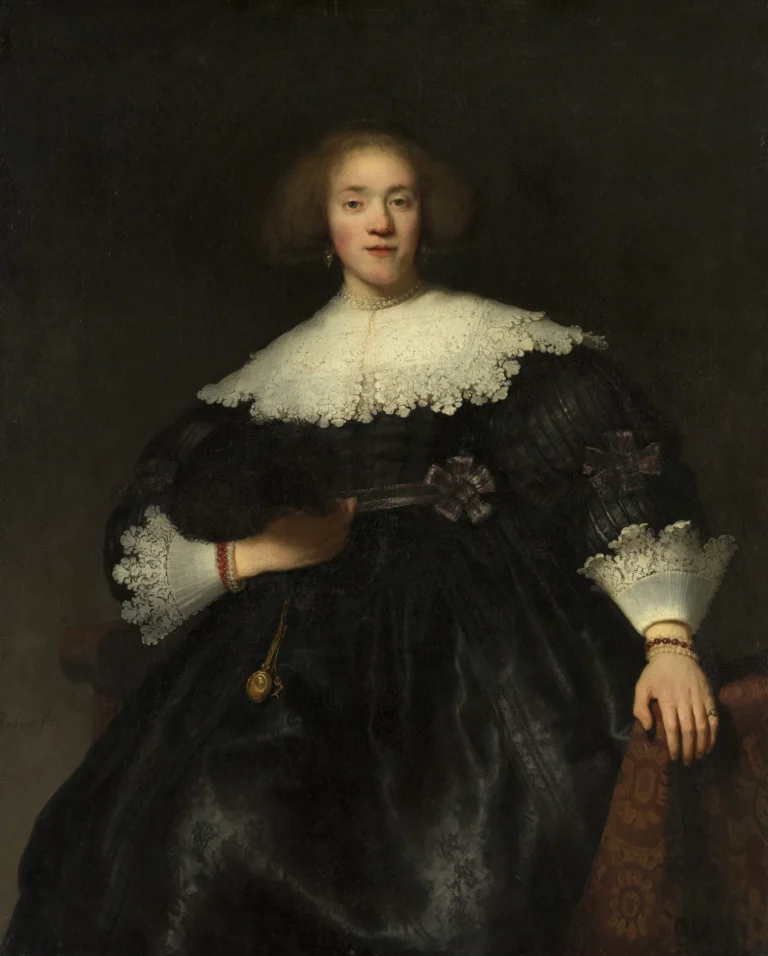Portrait of a young woman with a fan
Created in 1633, Portrait of a young woman with a fan showcases Rembrandt's early prowess in oil painting. The artwork depicts a young woman elegantly seated with a luxurious black feather fan and adorned in opulent attire, including a black silk gown and pearls. Through the masterful application of light and shadow, Rembrandt captures not just the likeness but the spirit of the subject, providing a glimpse into 17th-century Dutch society.
Year 1633
About the Artwork
Portrait of a young woman with a fan represents a moment in Rembrandt’s early career when he was honing his unique style. The painting’s distinguished subject, dressed in rich fabrics and jewelry, reflects the affluence of the time. The artwork also serves as part of a pair with 'Portrait of a Man Rising from His Chair,' intended as wedding gifts that showcase the artist's skill in creating dialogue between paired portraits. Rembrandt’s innovative use of chiaroscuro not only enhances the physical features of the sitter but also evokes emotional resonance, making it a significant piece in the narrative of Baroque portraiture.
Did You Know
While the identity of the young woman remains uncertain, it is believed she may have belonged to an affluent family, suggesting her status and the societal dynamics of 17th-century Holland.
Rembrandt’s approach to creating pendant portraits was groundbreaking at the time, drawing inspiration from the works of fellow artists such as Anthony van Dyck, combining elegance with a sense of relational dynamics.
Portrait of a young woman with a fan has a notable provenance, having once belonged to Lord Leconfield and later becoming part of the Metropolitan Museum of Art’s collection through a bequest in 1945, cementing its importance in art history.










